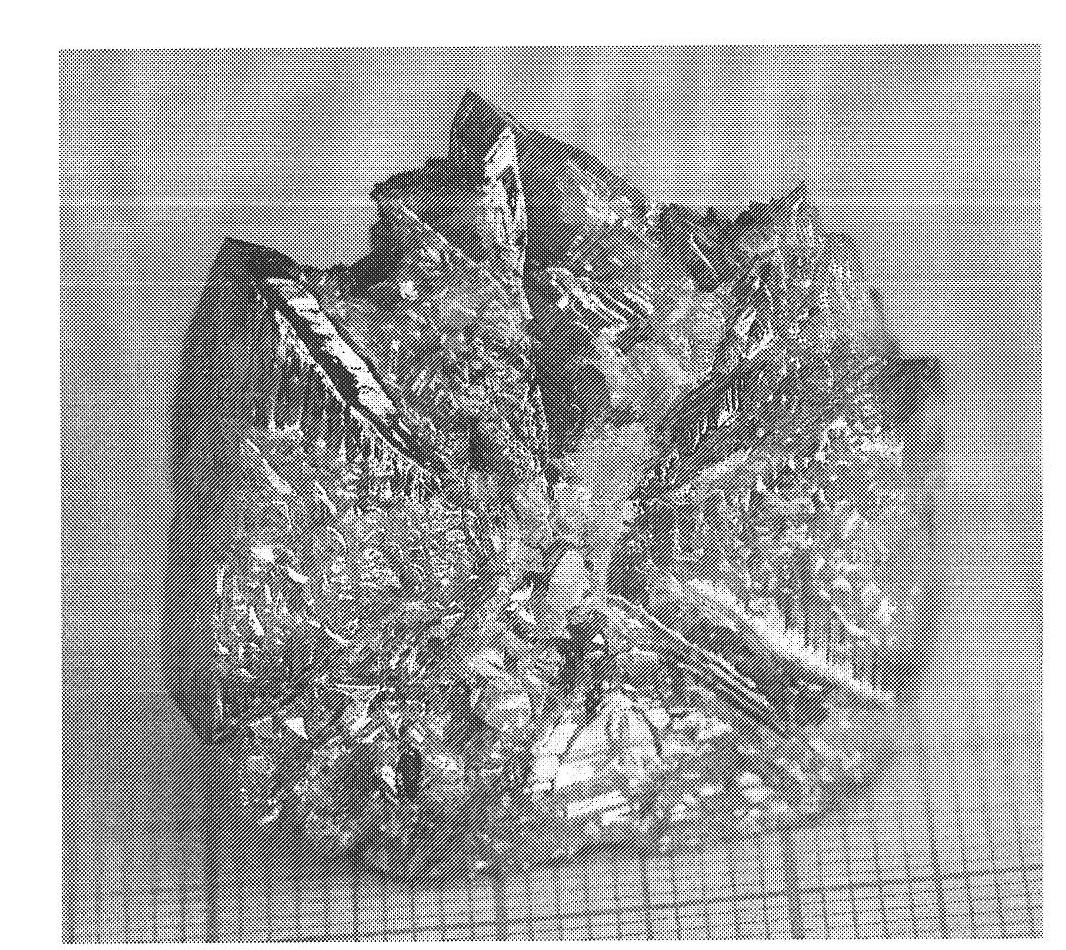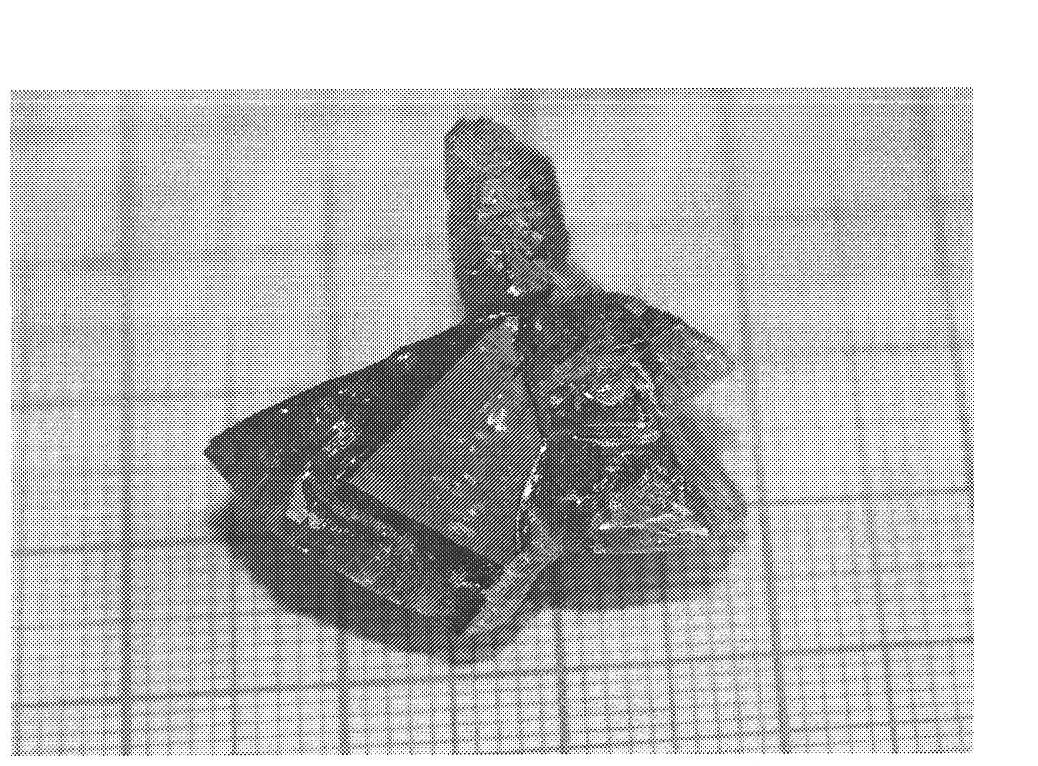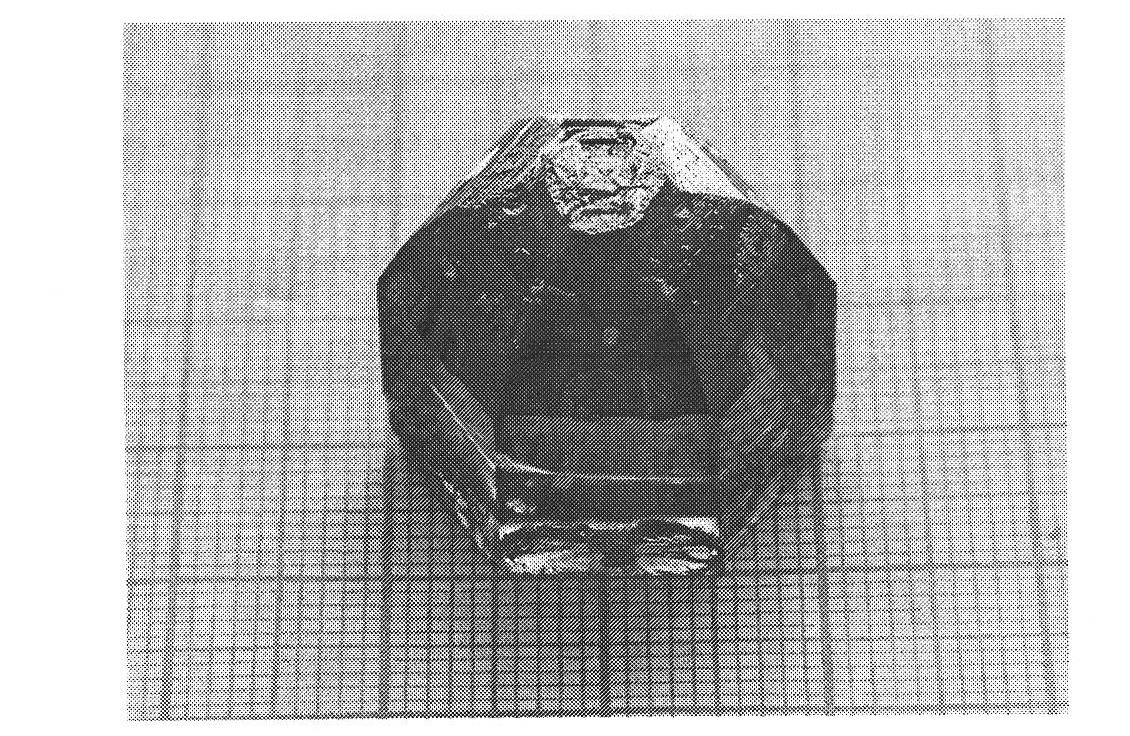Tellurium-caesium molybdate crystal, growth of tellurium-caesium molybdate crystal by flux method and application
A crystal growth and crystal technology, applied in the directions of crystal growth, single crystal growth, single crystal growth, etc., can solve the problems of easy solubility in acid, poor stability, high surface acoustic wave velocity, low delay temperature coefficient, etc., and achieve convenient industrial application. , cheap and easy to operate
- Summary
- Abstract
- Description
- Claims
- Application Information
AI Technical Summary
Problems solved by technology
Method used
Image
Examples
Embodiment 1
[0050] Cs 2 CO 3 , TeO 2 and MoO 3 According to the stoichiometric ratio, synthesize polycrystalline cesium tellurium molybdate, and add it to the flux system TeO 2 -MoO 3 (TeO 2 : MoO 3 =2:1), the molar ratio of polycrystalline CTM to flux is 1:2, put it into a platinum crucible with a volume of Φ80mm×80mm, heat up to 550°C to melt and mix the raw materials evenly; Lower the temperature to 460°C and let it crystallize spontaneously, you can get the following figure 1 Shown polycrystal, its powder X-ray diffraction figure is consistent with standard card (JCPDS, 89-5442), and what explanation obtains is the cesium molybdate tellurium crystal of hexagonal system, and the small crystal that takes out therefrom is used as seed crystal for growing relatively Crystals of large size.
[0051] Irradiate the finely ground cesium tellurium molybdate polycrystal with infrared laser with a wavelength of 1064nm generated by Nd:YAG, and produce strong green light, indicating that i...
Embodiment 2
[0053] Cs 2 CO 3 , TeO 2 and MoO 3 According to the stoichiometric ratio, synthesize polycrystalline cesium tellurium molybdate, and add it to the flux system TeO 2 -MoO 3 (TeO 2 : MoO 3 =2:1), the molar ratio of polycrystalline CTM and flux is 1:2, put it into a platinum crucible with a volume of Φ80mm×80mm, heat up to 550°C to melt the raw materials and mix them evenly; then cool down to the saturation point of the solution , at this time, the preheated seed crystal (taken from Example 1) is lowered into the solution, and the crystal rotation parameters are set as: rotating speed 5-50 rd, acceleration 1-10 s, operation 30-180 s, intermittent 5-50 s, and Cool down to 460°C at a rate of 0.01~3°C / h, and the growth cycle is 30 days, and then a light yellow block single crystal ( figure 2 ), its powder X-ray diffraction pattern is consistent with the standard card (JCPDS, 89-5442), indicating that what is obtained is a cesium tellurium molybdate crystal of the hexagonal s...
Embodiment 3
[0057] Cs 2 CO 3 , TeO 2 and MoO 3 According to the stoichiometric ratio, synthesize polycrystalline cesium tellurium molybdate, and add it to the flux system TeO 2 -MoO 3 (TeO 2 : MoO 3 =0.25:1), the molar ratio of polycrystalline CTM and flux is 1:2, put it into a platinum crucible with a volume of Φ80mm×80mm, heat up to 550°C to melt the raw materials and mix them evenly; then cool down to the saturation point of the solution At this time, put the preheated seed crystal into the solution, and set the crystal rotation parameters as follows: rotation speed 5-50 rd, acceleration 1-10 s, operation 30-180 s, intermittent 5-50 s, and 0.01-5 ℃ / h The temperature was lowered to 460°C, and the growth period was 60 days to obtain a light yellow block single crystal ( image 3 ), its powder X-ray diffraction pattern is consistent with the standard card (JCPDS, 89-5442), indicating that what is obtained is a cesium tellurium molybdate crystal of the hexagonal system.
PUM
| Property | Measurement | Unit |
|---|---|---|
| piezoelectric charge coefficient | aaaaa | aaaaa |
| thickness | aaaaa | aaaaa |
Abstract
Description
Claims
Application Information
 Login to View More
Login to View More - R&D
- Intellectual Property
- Life Sciences
- Materials
- Tech Scout
- Unparalleled Data Quality
- Higher Quality Content
- 60% Fewer Hallucinations
Browse by: Latest US Patents, China's latest patents, Technical Efficacy Thesaurus, Application Domain, Technology Topic, Popular Technical Reports.
© 2025 PatSnap. All rights reserved.Legal|Privacy policy|Modern Slavery Act Transparency Statement|Sitemap|About US| Contact US: help@patsnap.com



